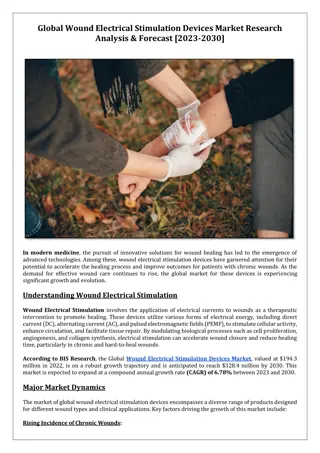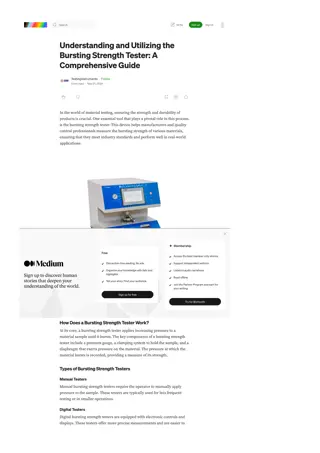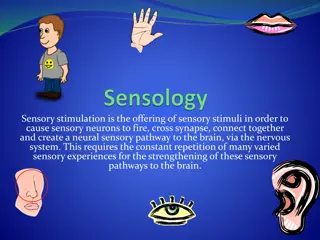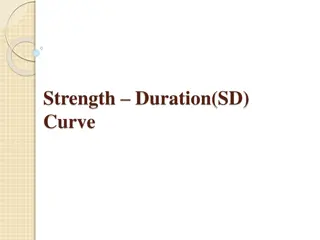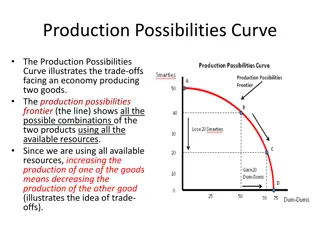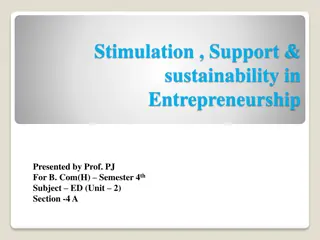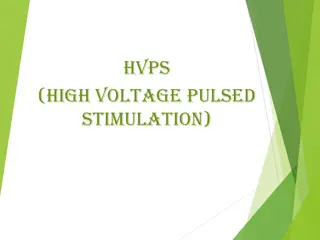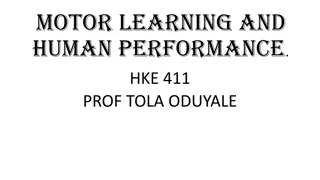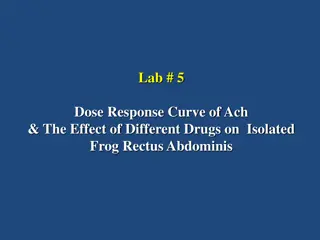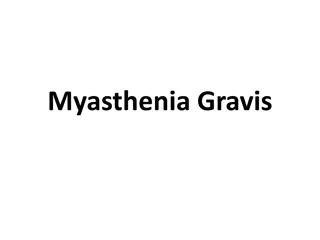Understanding Strength-Duration Curve in Neuromuscular Stimulation
The strength-duration curve depicts the relationship between electrical stimulus intensity and time required for minimal muscle contraction. It helps assess nerve damage in lower motor neuron lesions. Various types of curves exist based on innervation status, such as normal innervation, complete denervation, and partial denervation, each with distinct characteristics like curve shape and response patterns. Understanding rheobase and chronaxie values also plays a crucial role in muscle stimulation. This curve aids in clinical diagnostics and treatment planning for neuromuscular disorders.
Download Presentation

Please find below an Image/Link to download the presentation.
The content on the website is provided AS IS for your information and personal use only. It may not be sold, licensed, or shared on other websites without obtaining consent from the author. Download presentation by click this link. If you encounter any issues during the download, it is possible that the publisher has removed the file from their server.
E N D
Presentation Transcript
StudyMafia.Org Strength Duration Submitted To: Studymafia.org Studymafia.org Submitted By:
Table Contents Definition Introduction Types of S-D Curve Factors affecting the S-D Curve Advantages of S-D Curve Disadvantages of S-D Curve Clinical Significance Conclusion 2
Introduction The strength-duration curve is a graphical representation of the relationship between the intensity of an electrical stimulus at the motor point of a muscle and the length of time taken to elicit a minimal contraction in that muscle. Here, strength refers to the stimulus intensity on the vertical axis while duration refers to the pulse duration on the horizontal axis. It is used to determine nerve damage in lower motor neuron lesions. 3
Types of Strength-Duration Curve Normal Innervation This is also called a "nerve curve". All nerve fibers supplying the muscle are intact. The shape of the curve is a continuous rectangular hyperbola. The same intensity is required to produce a response at longer durations. The intensity increases steadily for shorter durations. The curve is usually seen rising at the 1ms mark. 5
Types of Strength-Duration Curve Complete Denervation This is also called a "muscle curve". All nerve fibers supplying the muscle have degenerated. The curve is characteristically steep and shifted to the right. The intensity keeps increasing when lowering the duration below 100ms. There is no response seen at very short durations. 6
Types of Strength-Duration Curve Partial Denervation Some of the nerve fibers supplying the muscles have degenerated while others are intact. A characteristic kink is present in the curve. The right side of the curve represents the denervated part of the muscle while the left side represents the innervated fibers of the muscle. 7
Types of Strength-Duration Curve Rheobase It is the minimum intensity of current required to stimulate a muscle at infinite duration. Its normal value ranges between 2 and 18 mA. The rheobase is greater for denervated muscles. Chronaxie It is the minimum time required for a current of double the intensity of rheobase to stimulate a muscle. Its normal value is below 1ms. Chronaxie is inversely proportional to excitability. Thus, its value is greater for denervated muscles. 8
Factors affecting the S-D Curve Skin resistance Subcutaneous tissue like fat Temperature Electrode size, material and placement Age of the subject Fatigue 9
Advantages It is quick and easy to perform. It requires minimal training. It is economical in comparison to other clinical tests. 10
Disadvantages It only provides qualitative data in relation to the degree of denervation. It cannot locate the site of the lesion. In large muscles, only a few fibers can be studied due to the limits of the method. 11
Clinical Significance It ascertains the excitability of the nerve and thus, can detect the magnitude of nerve damage. It can show recovery over a period of time. It is a valuable diagnostic and prognostic tool. It is usually performed after 3 weeks of nerve injury to allow for Wallerian degeneration. The intrarater reliability (r = .541) is lower than interrater reliability (r = .945), this was attributed to normal physiological variation in subjects. 12
Conclusion The strength duration curve is a property of nodal membrane and, while it depends on a number of factors, its measurement may shed light on axonal properties when taken in conjunction with measurements of axonal excitability. 13
References Google.com Wikipedia.org Studymafia.org Slidespanda.com
Thanks To StudyMafia.org



